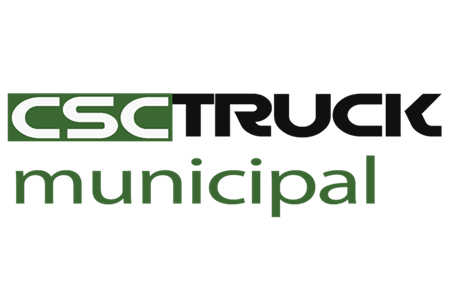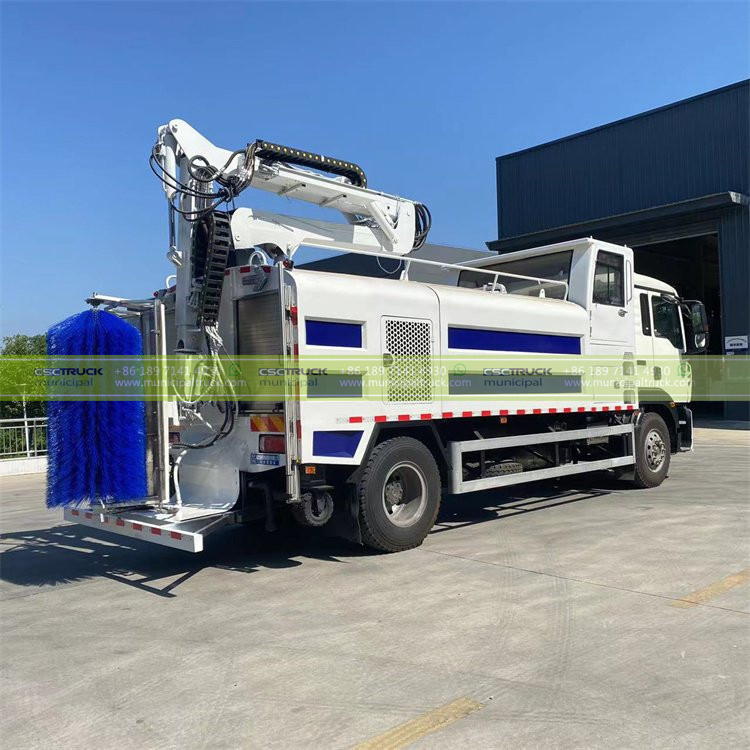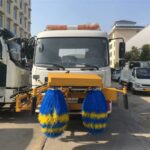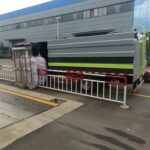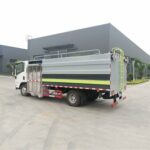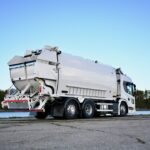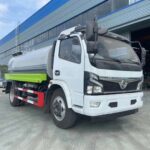Dawn breaks over a rain-slicked interstate. A blown tire carcass has ricocheted into the median barrier cable, tangling with storm debris into a lethal projectile zone. Nearby, invasive weeds choke drainage culverts while graffiti mars soundwalls. For highway maintenance chiefs, such scenes aren’t anomalies—they’re daily battles where traditional equipment hits operational dead ends. Enter the fence sweeper truck: a purpose-engineered hybrid merging industrial-strength vegetation control, debris extraction, and precision cleaning. But when does this specialized asset transition from “useful” to “essential” in your corridor strategy? The answer lies in recognizing critical thresholds where conventional methods fail.
Beyond Mowers and Grapples: Defining the Fence Sweeper’s Niche
Fence sweepers integrate three core functions into a single chassis:
- High-Pressure Water/Brush Systems: Stripping organic growth, sediment, and graffiti from barriers (concrete, wire rope, chain-link).
- Hydraulic Reach Arms: Accessing backslopes and embankments unreachable by conventional mowers.
- Debris Capture: Vacuum or grapple systems containing dislodged waste.
Unlike standalone mowers or compactor garbage trucks, this all-in-one design addresses the entire encroachment lifecycle—growth to removal—without crew dismounts or equipment swaps. Efficiency isn’t incremental; it’s exponential.
Critical Thresholds: When Conventional Methods Hit the Wall
1. Vegetation Escalation on Inaccessible Slopes
Steep backslopes (≥30°) or narrow medians force traditional boom mowers into dangerous, unstable positions. Fence sweepers deploy articulating arms with cutter heads or 3,500 PSI jets to clear growth within inches of barriers—no operator exposure to traffic.
Use Case: Kudzu engulfing a curved bridge approach guardrail. A sweeper’s tracked arm cleans 800 ft/hr vs. 150 ft/hr with a manned crew.
2. Debris Entanglement in Safety Systems
Wire-rope barriers trap everything from tire shreds to furniture. Manual extraction requires lane closures and hand labor. Sweepers combine rotating steel brushes to untangle debris with vacuums capturing fragments before they scatter.
Use Case: Post-accident cable barrier fouled with metal fragments. Sweeper clears 1 mile in one shift vs. 3 days with grapple trucks.
3. High-Traffic Corridor Maintenance Windows
Urban interstates allow only 2–3 AM work windows. Speed is non-negotiable. Fence sweepers operate at walking speed (3–5 mph), cleaning continuously without stopping—unlike skid-steers requiring constant repositioning.
4. Regulatory Compliance & Liability Hotspots
Overgrown vegetation obscuring signage or graffiti-laden soundwalls near schools trigger ADA lawsuits or federal compliance violations. Sweepers deliver documented, repeatable cleaning for audit trails.
The Productivity Equation: Quantifying Operational Superiority
| Scenario | Traditional Crew (3 personnel) | Fence Sweeper Truck |
|---|---|---|
| 1 mile Median Cable Cleaning | 16–24 labor hours | 4.5 hours |
| Steep Slope Mowing (1 acre) | 8 hours + traffic control | 2.2 hours |
| Soundwall Graffiti Removal | 40 man-hours (scaffolding) | 5.3 hours |
| Debris Capture Rate | 60–70% (scatter loss) | >95% |
- Lane Closure Reduction: 60% fewer closures by consolidating tasks (vegetation, debris, washing).
- Labor Efficiency: Replaces 3–5 crew members with one operator.
- Safety ROI: Eliminates 90% of manual slope work near live lanes.
Engineering Resilience: Inside a Modern Fence Sweeper’s Anatomy
Four subsystems enable unmatched corridor versatility:
1. Adaptive Tool Carriers
Interchangeable heads switch tasks in minutes:
- Rotary Cutters: Mulch woody growth up to 3″ diameter.
- Drum Brushes: Scour graffiti/sediment without surface damage.
- High-Pressure Jets: Blast root masses from barrier foundations.
2. Stabilized Reach Geometry
Outriggers and articulated booms extend 25–40 ft horizontally or vertically, maintaining stability on 45° slopes. Non-marking tracks prevent pavement damage.
3. Containment-Integrated Cleaning
Vacuum shrouds surround cutting/brushing heads, capturing 95%+ debris at the source—critical for preventing storm drain clogs downstream.
4. Operator-Centric Command Modules
Ergonomic cabs feature joystick controls, 360° cameras, and LiDAR collision avoidance—enabling precision in congested zones.
Strategic Deployment: Mapping Corridors to Sweeper Economics
Not every highway mile justifies a fence sweeper. Prioritize deployment where:
- High-AccHistory Segments: Medians with recurring cross-over crashes needing immaculate barrier visibility.
- Urban Density Zones: Limited access corridors where lane closures cost >$15,000/hour.
- Ecologically Sensitive Areas: Near wetlands where herbicide use is restricted and manual crews risk erosion.
- High-Vandalism Corridors: Soundwalls requiring monthly graffiti abatement.
Fleet Evolution: Integrating Sweepers into Holistic Corridor Management
Fence sweepers aren’t standalone miracles—they’re force multipliers in a larger fleet ecosystem. While professional sewer trucks handle culvert blockages and compactor garbage trucks manage rest area waste, sweepers specialize in the vertical plane: barriers, signage, and embankments. Forward-thinking agencies deploy them alongside drone inspectors mapping growth hotspots, creating closed-loop maintenance cycles.
For agencies seeking scalable platforms, chassis like CSCTRUCK Municipal redefine versatility. Its reinforced frame accommodates interchangeable sweeper bodies, jet/vac units, or refuse packs—all managed through integrated telematics. Imagine a single truck clearing guardrails in spring with a sweeper module, switching to a sewer jetter for summer storm drain prep, then adopting a compactor body for autumn leaf collection. The Municipal’s CAN bus architecture synchronizes attachments, while its 450hp engine delivers the hydraulic flow demanded by high-intensity sweeping. This modularity transforms capital expenditure from fragmented equipment purchases into a unified, adaptable infrastructure investment. As highways face escalating traffic volumes and climate-induced debris loads, the fence sweeper transitions from tactical tool to strategic linchpin—ensuring corridors don’t merely function, but endure. The whir of a brush head stripping ivy from a mile marker isn’t just maintenance; it’s the sound of infrastructure preserving its own integrity against entropy.
